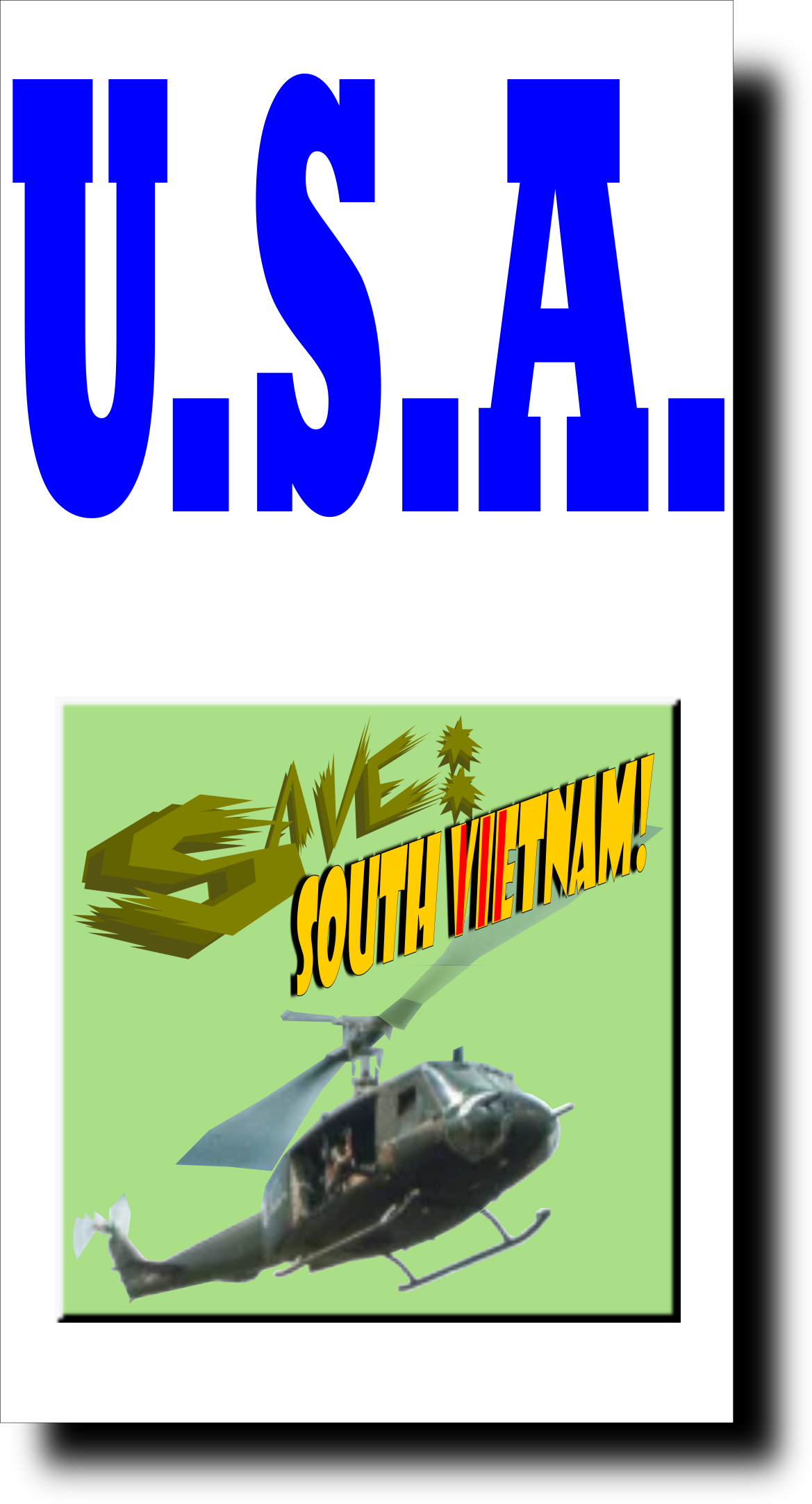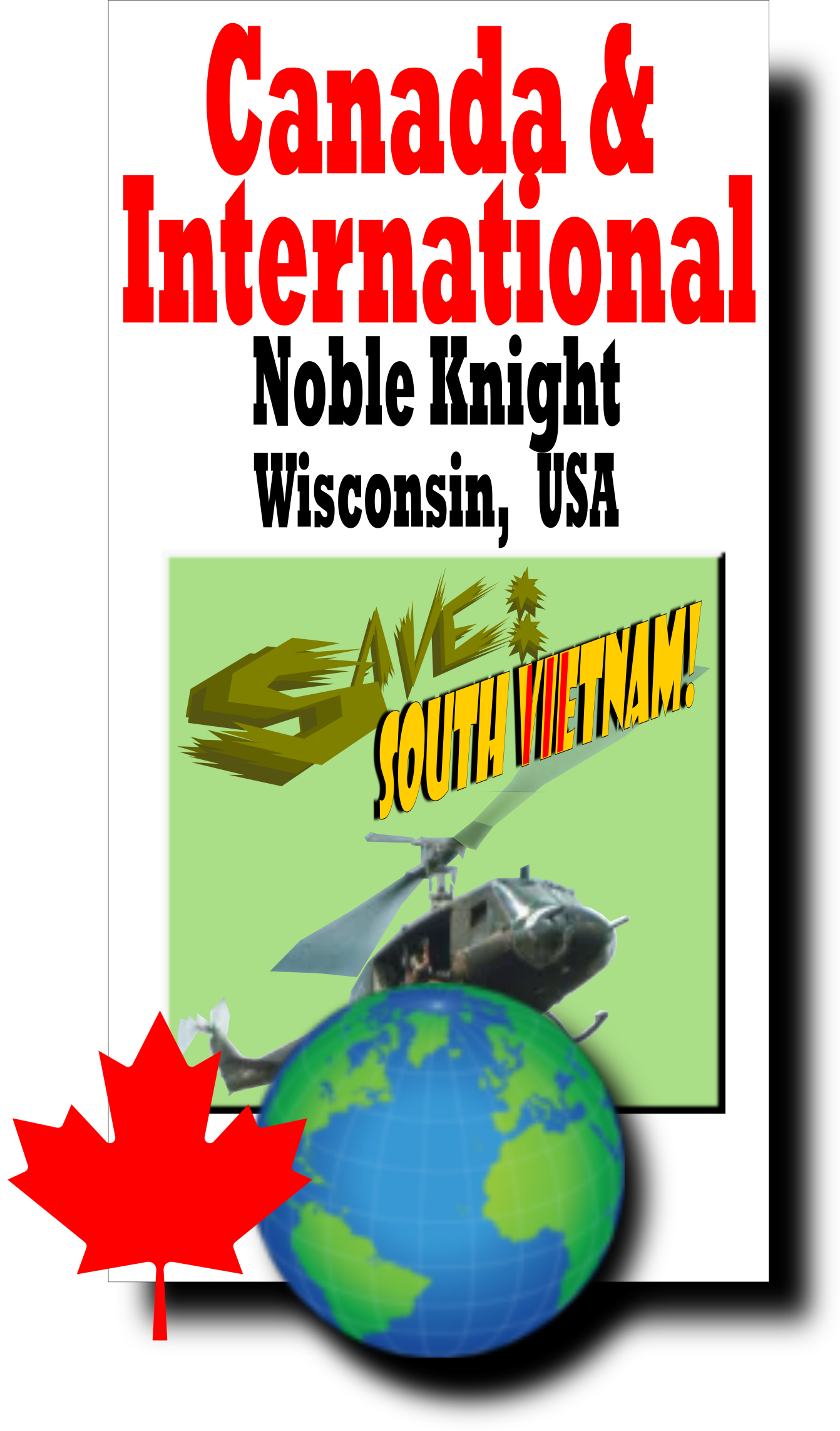Looking for the new 2024 Supplement for the folio version? Click here: 2024 Supplement
Save South Vietnam!: $69 (U.S.)
Click here to view play-throughs of each phase, and a full turn: PLAYTHROUGH!
“Save South Vietnam!” Game contents: 36″ x 22″ game board (14-point, which is very thick and sturdy to last a lifetime, scored for easy folding and storage); 22 page game manual including designer notes, optional rules, and 3 short scenarios; 1 player aid; 286 one- and two-sided 5/8″ laser-cut high quality glossy counters; 2 dice; all in a 12″ x 9 1/4″ x 1 1/4″ bookshelf box
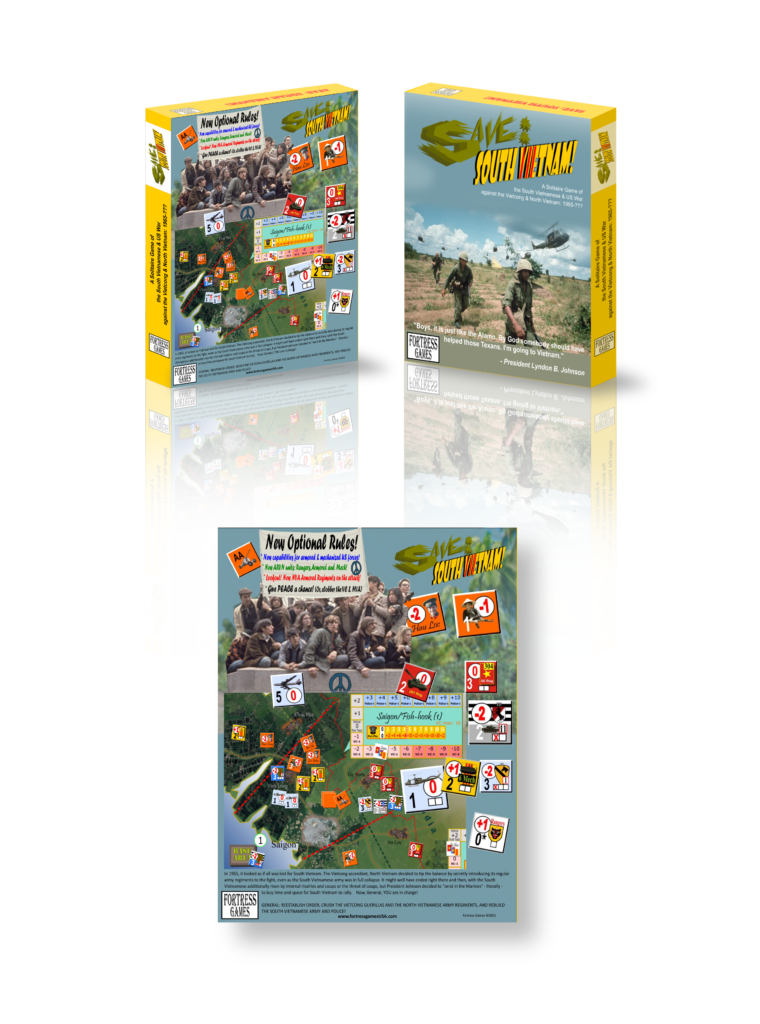
11.75″ x 9.25″ x 1.25″ box
On May 10, 1965 two Vietcong (VC) regiments overran the provincial capital of Long Binh province, Song Be. The Battle of Song Be was the culmination of the collapse of the South Vietnamese regular army (Army of the Republic of Vietnam, or ARVN). It was the first time a South Vietnamese provincial capital had fallen and then been held by VC forces in the long-running war. To General Westmoreland, commander of the Military Assistance Command, Vietnam (MACV), the battle could not have been more ominous.
Two months earlier, on March 8, 1965, two battalions of the 9th Regiment, 3rd Marine Division, had landed at Danang to take over the large base’s defense from ARVN forces who were thereby presumably free to engage in offensive operations against the ever-growing VC forces. Later that year, regular US Army units were deployed in Bien Hoa and other strategic areas. By fall 1965, the 1st Cavalry Division was engaged in aggressive offensive military operations in the Ia Drang Valley south-west of Pleiku in Vietnam’s Central Highlands. “Americanization” of the war had begun. Before it was over 10 years later, Cambodia and Laos had been dragged into the horrific struggle as well. Despite never losing a battle, US forces left Vietnam in 1973 and South Vietnam fell to the communists after a brutal offensive in early 1975.
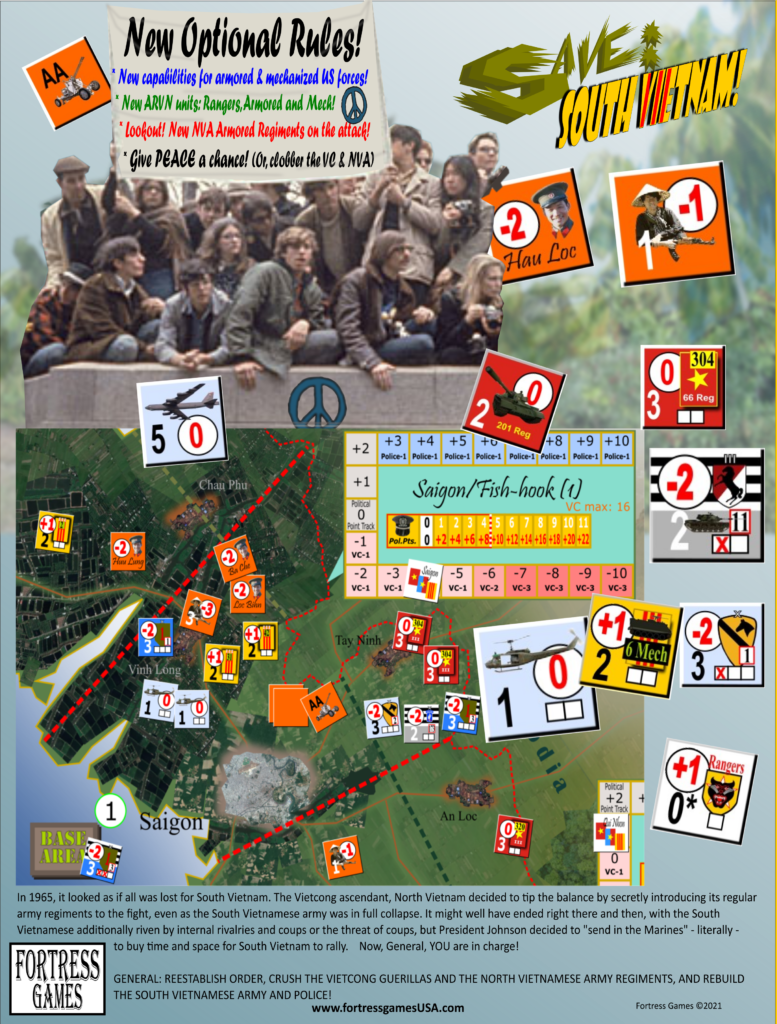
(back of box)
It is early 1965, and now YOU are in command! The ARVN has basically collapsed and watch out! North Vietnamese Army (NVA) units are infiltrating the south in large numbers even as local VC forces grow in strength. Can you, as the USA and South Vietnam, defeat the resilient communist fighters and create a stable and lasting western-aligned nation as a bastion in Southeast Asia? Or will you, like Presidents Johnson and Nixon, find the VC and NVA impossible to completely defeat?
GENERAL: REESTABLISH ORDER, CRUSH THE VIETCONG GUERILLAS AND THE NORTH VIETNAMESE ARMY REGIMENTS, AND REBUILD THE SOUTH VIETNAMESE POLICE AND ARMY!!!
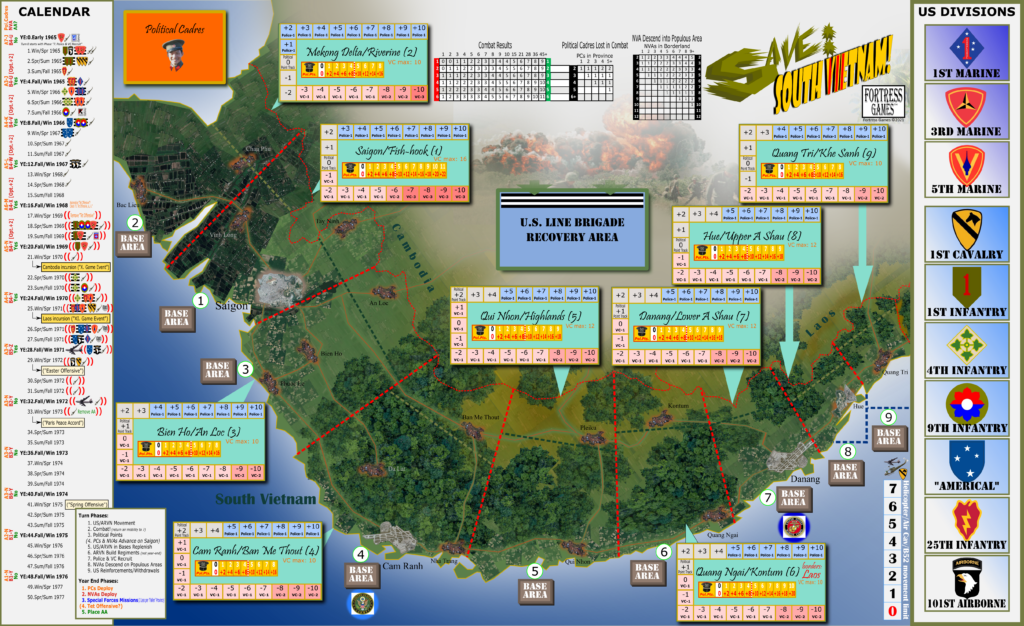
(36″ x 22″ game board)
Below left: A brigade each of the 1st Infantry “Big Red One” Division and the 1st Cavalry Division. Below, “Huey” gunships and B52 bombers. An optional rule allows the play of several unattached brigades, including the 11th Armored Regiment, pictured to the right of the 1st Cav. Below the 11th Armored is an ARVN regiment. US forces are powerful and effective, but to win you’re going to need to win enough “hearts and minds” to form a stable and strong South Vietnam and South Vietnamese army.
Below right: your ENEMY! One battalion of Vietcong, and to their right, a regiment of the NVA 304th Division (a storied force which gained its fame fighting the French in the First Indochina War). Below those is a VC “Political Cadre”, subversive political and administrative communist leadership which works to mobilize local communist support. Strong Political Cadres mean a strong VC presence. Last, an enemy anti-aircraft unit, which will wreak havoc on your “Hueys”. These units start inverted, and may end up “AA” or, if you’re lucky, “No AA”!

Optional Units: the new “boxed” version of the game comes with additional optional rules and units, to allow a more realistic portrayal especially of ARVN and NVA capabilities, especially late in the war. Below from left to right: ARVN Rangers played an important role as elite reaction forces for South Vietnam from the beginning of the war, and you can elect to have them ride again with the new optional rule. Additionally, late in the war both ARVN and NVA mechanized units played a larger and larger role, giving both armies greater punch and mobility. Once you’re comfortable with the game’s basic rules try out these historical and fun options!

(5/8″ laser-cut glossy counters)
Initial Set Up: the back cover of the game manual assists you by illustrating the initial set up. US divisions each have their own staging area on the game board, as do the Vietcong Political Cadres. The initial US/ARVN set up is pretty sparse: one ARVN regiment patrols the Mekong Delta, and that’s it! This reflects the lack of “combat effective” ARVN units at the start of the US involvement (there were certainly more ARVN regiments than that in 1965, but the paucity of initial in-game regiments reflects the poor state of ARVN forces at that time). In the first turn, US Marines will come ashore at Danang airbase, and President Johnson’s massive US commitment to the war will begin…
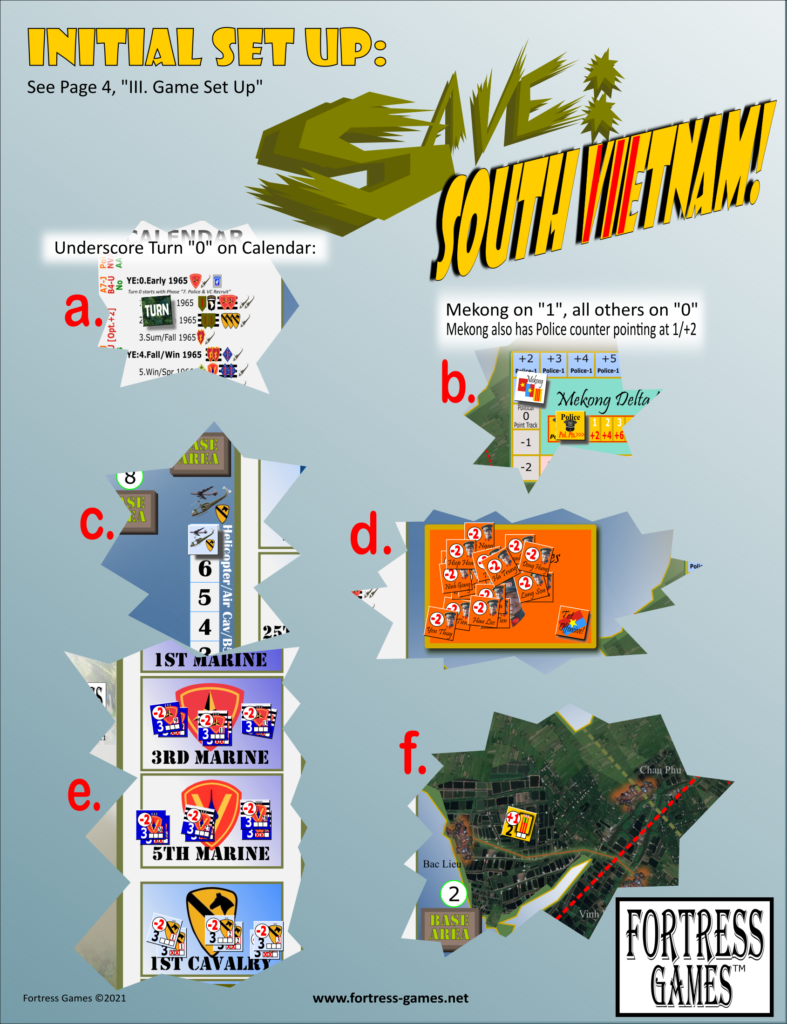
(back of game manual)
EXAMPLES OF PLAY
The Ia Drang Valley, November 1965: In its first major action of the war, the US sent the 1st Cavalry Division into the Highlands southwest of Pleiku to take on a strong NVA buildup along the border between South Vietnam and Cambodia. Neutralizing big, powerful NVA regiments while they’re still in the remote borderlands is a very important US tactic. Once they descend into the populous areas and can coordinate closely with the VC, the NVA invite far more problems. The battle begins:
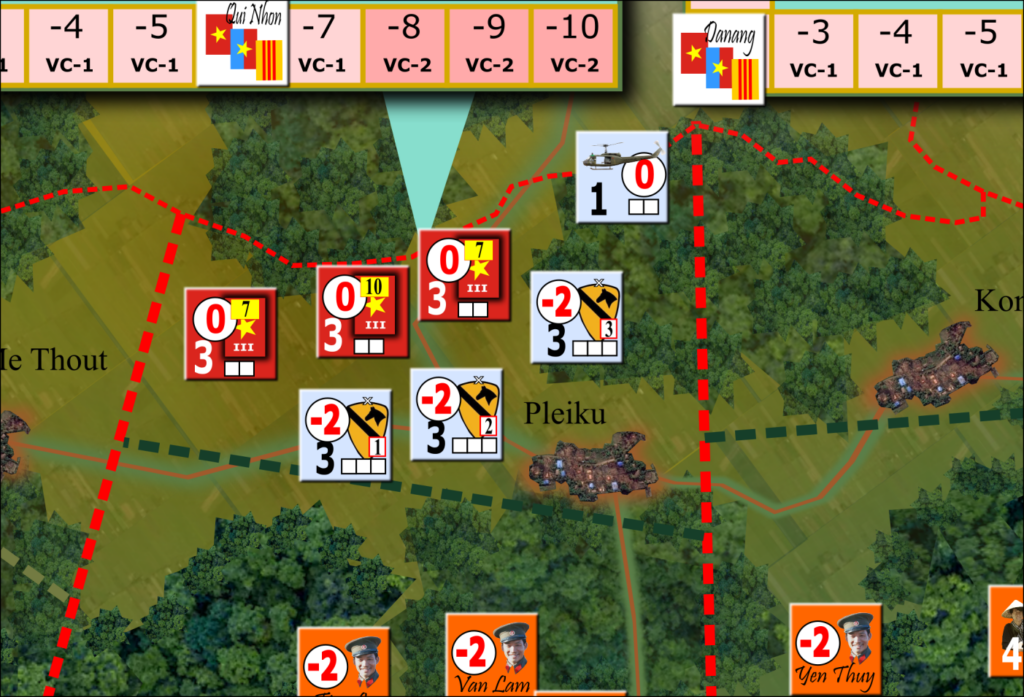
Operation Cedar Falls: An early priority for the US military was to push the VC away from close proximity to Saigon. Cedar Falls was the largest of these attempts, using 7 brigades and regiments in a classic “hammer and anvil” operation against the VC stronghold known as the “Iron Triangle”, a notorious tunnel-fortress complex just northwest of Saigon. Expect stiff VC resistance, including some enhanced anti-aircraft capabilities harassing your Huey gunships:

Hue, 1968: One of the dramatic results of the 1968 “Tet Offensive” was the fall of Hue to the NVA. Here, US Marines and elements of the 1st Cavalry Division attack NVA and VC forces in and around Hue. Note that there is plenty of trouble around Danang as well, plus a strong VC presence around Quang Tri. And those are NVA regiments pouring across the Laotian border into South Vietnam’s A Shau Valley (and potentially beyond? To the populous areas??). Send in the Marines and get control of this, General!:
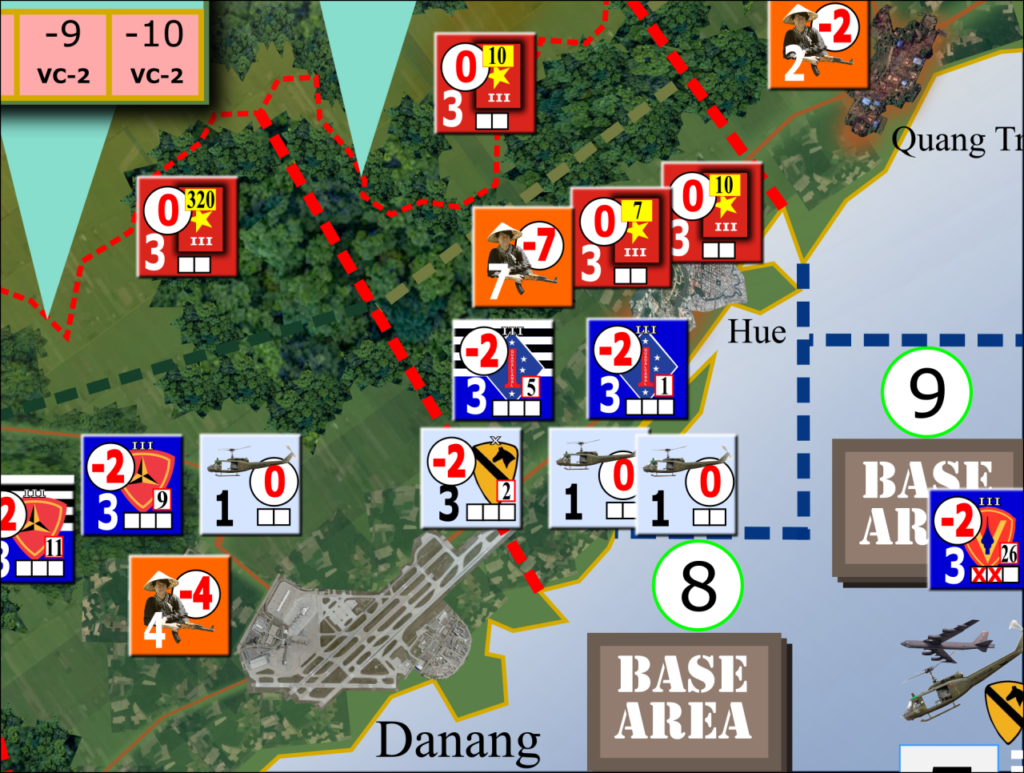
Cambodia, 1970: Below, US forces from the 1st Cavalry Division, 25th Infantry Division, and 11th Armored Cavalry Regiment cross into Cambodia in 1970. Despite its sordid reputation to this day, the US/ARVN incursion into Cambodia achieved some remarkable tactical successes, disrupting the communist base and supply infrastructure from Cambodia into South Vietnam to such a degree that, when the NVA launched its large “Easter Offensive” two years later, very little of that attack came from Cambodia. So, don’t get discouraged by what you’ve read about it – your Cambodian incursion can be a huge assist in your “Vietnamization” efforts during this later period of the war:
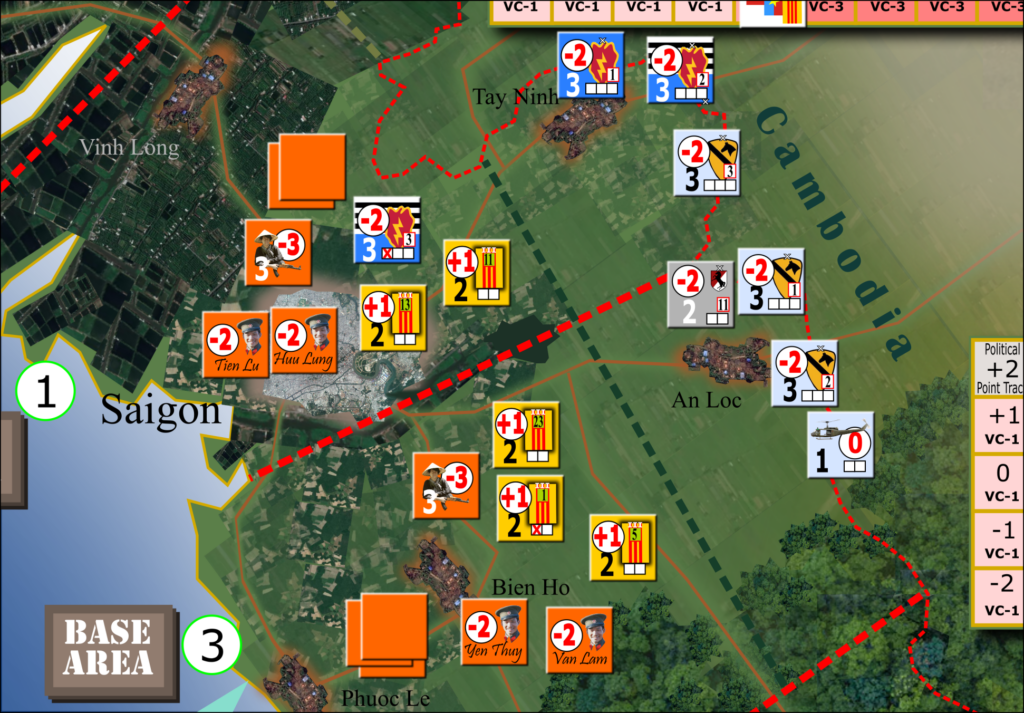
Endgame, 1975: If your efforts fail, you may find yourself in the same situation as the combatants found themselves in 1975. Below, NVA regiments swept through Ban Me Thout to the coast, splitting South Vietnam in half. Support for the government across South Vietnam was simply too thin to provide the type of defense-in-depth needed against the strong, coordinated communist assault. The disastrous situation below means a strong base for the VC/NVA in Nha Trang while its Political Cadres and NVA regiments pour into Saigon’s environs – a desperate and, in the event, irreparable scenario. Don’t let this happen to you! Winning “Save South Vietnam!” requires winning South Vietnamese hearts and minds across more than a tiny segment of the country while holding off the strongest communist efforts. Do that, and prevail!

